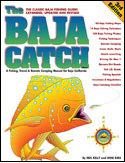Pelagic Red Crab, Tuna Crab, Lobster Krill
Langostilla, Langostino chileno
(Pleuroncodes planipes)
Pelagic Red Crab, Pleuroncodes planipes: The Pelagic Red Crab is a member of the Galathidae Family and a very unique species that serves as a vital food source for a wide variety of marine life including the Humboldt squid, turtles, whales, and all sorts of fish.
The Pelagic Red Crab is found in the open ocean and on occasion washed ashore during the spring months.
Distribution in Mexico
In Mexican waters, is found predominately along the lower west coast of the Pacific side of the Baja California peninsula and in the Sea of Cortez south of the Midirff Islands, and ranges to about 125 miles south of Cabo San Lucas.
This crab species is believed to spend the majority of the year hiding in and around sandy bottoms. However, during the spring it travels in enormous dense schools, up to 10 individuals per square foot, that have been estimated to consist of up to 200 billion individual members weighing a total of 300,000 tons.
These schools attract a vast number of diverse predators. The Pelagic Red Crab is approximately 4 inches in length, with the shell measuring just over 1 inch. It swims backwards by flipping it tail and streamlining its legs. The Pelagic Red Crab feeds on planktonic bits of food.
The Pelagic Red Crab is utilized by the panga flotilla of commercial fishermen to catch Red Snappers, the prized Huachinango, out of deep holes by the bucket load; the Red Snappers are only interested in live specimens and will not touch dead ones, making same day collection and maintenance a key for the successful use of this crab as a bait. The Pelagic Red Crab is also used to catch the Pacific Creolefish in large numbers on or near the surface on some occasions.
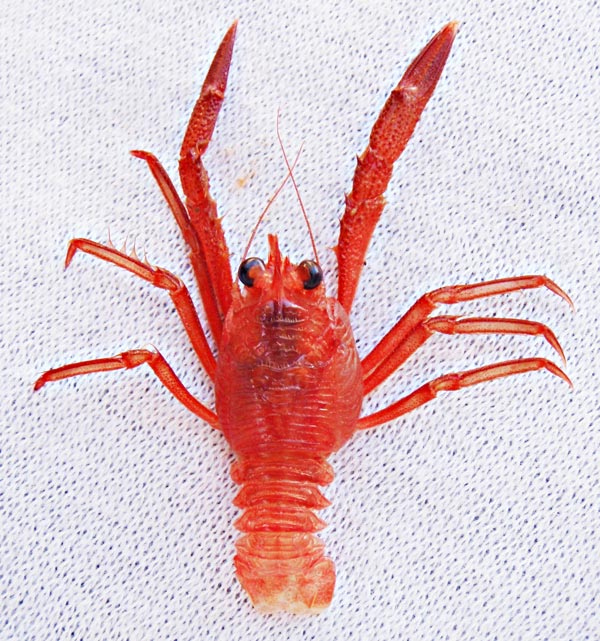

Pelagic Red Crab, Pleuroncodes planipes: Collected off the surface with a bait net five miles at sea and five miles northeast of La Playita, Baja California Sur, Mexico. Photos courtesy of John Snow.
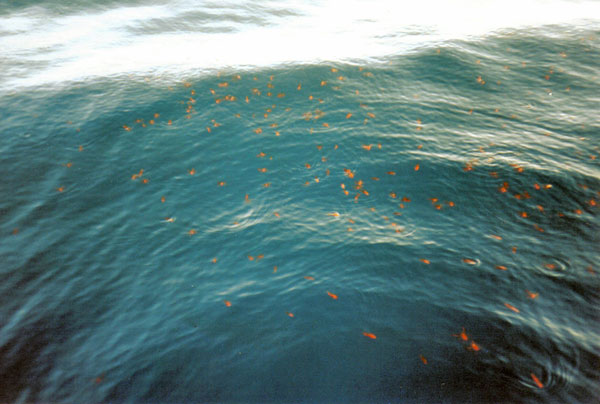
Pelagic Red Crab, Pleuroncodes planipes: Collected with a bait net, midday in 75-degree water, in April 2002, some 10 miles at sea northeast of La Playita, San Jose del Cabo, Baja California Sur, Mexico. Description and photo courtesy John Snow.
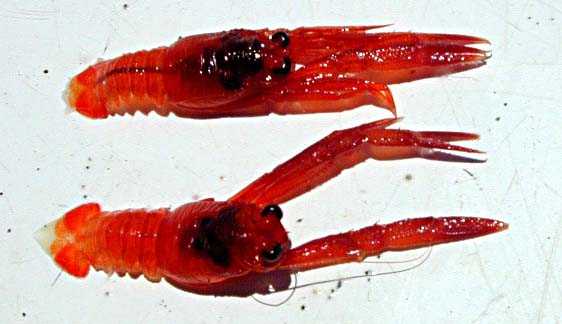
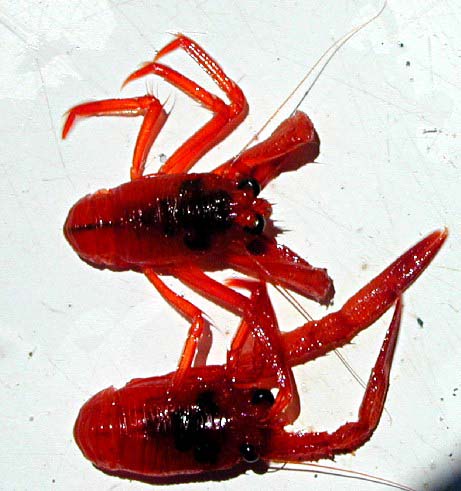
Pelagic Red Crab, Pleuroncodes planipes: Thanks to Gordo Banks Pangas, San Jose del Cabo, Baja California Sur, Mexico, for these terrific shots of the pelagic red crab, also called "tuna crab.". These crabs sometimes form solid floating masses on the ocean surface and they are a preferred forage when available. In 1970, Ray Cannon wrote a column in Western Outdoor News about a huachinango surface frenzy stimulated by red crabs off San Jose del Cabo. Sometimes they die and wash ashore by the millions, forming windrows hundreds of yards long. Photos courtesy Eric Brictson.
Copyright ©



